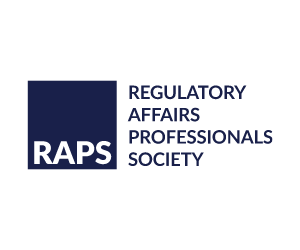Industry Calls for Changes to FDA’s DSCSA Product Identifier Guidance
![]() Regulatory News | 20 November 2018 |
Regulatory News | 20 November 2018 |
Industry groups and drugmakers are calling for changes to the US Food and Drug Administration’s (FDA) recent draft questions and answers guidance on product identifiers under the Drug Supply Chain Security Act (DSCSA).
The 17-page draft guidance was released in September along with two final DSCSA guidances detailing a compliance policy and grandfathering policy and is meant to answer industry questions on the content and format of the product identifier required under the act.
The biggest change industry is calling for is for FDA to allow manufacturers to use the GS1 Global Trade Identification Number (GTIN), which typically contains the National Drug Code (NDC) number along with other information, in the human-readable portion of the product identifier in place of the NDC. This request is echoed by the Biotechnology Innovation Organization (BIO), the Association for Accessible Medicines, the Healthcare Distribution Alliance, Bristol-Myers Squibb, Shire and GS1 itself.
In its comments, the BIO also asks FDA to revise the guidance to allow manufacturers more flexibility when it comes to ordering the human-readable portion of the product identifier.
“We note that not all manufacturers align the order of this information with FDA’s recommendation of NDC, serial number, lot, and expiration date,” BIO writes, adding other orders should be permissible as long as the information is “easily located and understood.”
Similarly, BIO says that manufacturers should be allowed more flexibility to use different expiration date formats than the guidance recommends. In the draft guidance, FDA recommends the expiration date format be expressed as YYYY-MM-DD or YYYY-MMM-DD if using three-letter abbreviations for the month, or in the same format but without the day when space is limited.
In the draft guidance, FDA explains that the “GTIN typically contains additional digits and is not in the 3-segment format by which the NDC is defined in FDA regulations” and raises concern that the GTIN on its own in the human-readable portion of the product identifier could lead to improper identification of a drug.
However, the draft guidance does allow for manufacturers to use the GTIN in the machine-readable 2D barcode.
BIO also calls on FDA to publish final guidance far enough in advance of statutory deadlines to give companies a chance to implement recommendations.
“The timeliness of FDA guidance will be increasingly critical as industry begins to transition from the current system requirements to the fully functioning 2023 system, particularly because this system is not articulated in detail in the DSCSA,” BIO writes.
Public Docket
The 17-page draft guidance was released in September along with two final DSCSA guidances detailing a compliance policy and grandfathering policy and is meant to answer industry questions on the content and format of the product identifier required under the act.
The biggest change industry is calling for is for FDA to allow manufacturers to use the GS1 Global Trade Identification Number (GTIN), which typically contains the National Drug Code (NDC) number along with other information, in the human-readable portion of the product identifier in place of the NDC. This request is echoed by the Biotechnology Innovation Organization (BIO), the Association for Accessible Medicines, the Healthcare Distribution Alliance, Bristol-Myers Squibb, Shire and GS1 itself.
In its comments, the BIO also asks FDA to revise the guidance to allow manufacturers more flexibility when it comes to ordering the human-readable portion of the product identifier.
“We note that not all manufacturers align the order of this information with FDA’s recommendation of NDC, serial number, lot, and expiration date,” BIO writes, adding other orders should be permissible as long as the information is “easily located and understood.”
Similarly, BIO says that manufacturers should be allowed more flexibility to use different expiration date formats than the guidance recommends. In the draft guidance, FDA recommends the expiration date format be expressed as YYYY-MM-DD or YYYY-MMM-DD if using three-letter abbreviations for the month, or in the same format but without the day when space is limited.
In the draft guidance, FDA explains that the “GTIN typically contains additional digits and is not in the 3-segment format by which the NDC is defined in FDA regulations” and raises concern that the GTIN on its own in the human-readable portion of the product identifier could lead to improper identification of a drug.
However, the draft guidance does allow for manufacturers to use the GTIN in the machine-readable 2D barcode.
BIO also calls on FDA to publish final guidance far enough in advance of statutory deadlines to give companies a chance to implement recommendations.
“The timeliness of FDA guidance will be increasingly critical as industry begins to transition from the current system requirements to the fully functioning 2023 system, particularly because this system is not articulated in detail in the DSCSA,” BIO writes.
Public Docket
© 2025 Regulatory Affairs Professionals Society.














